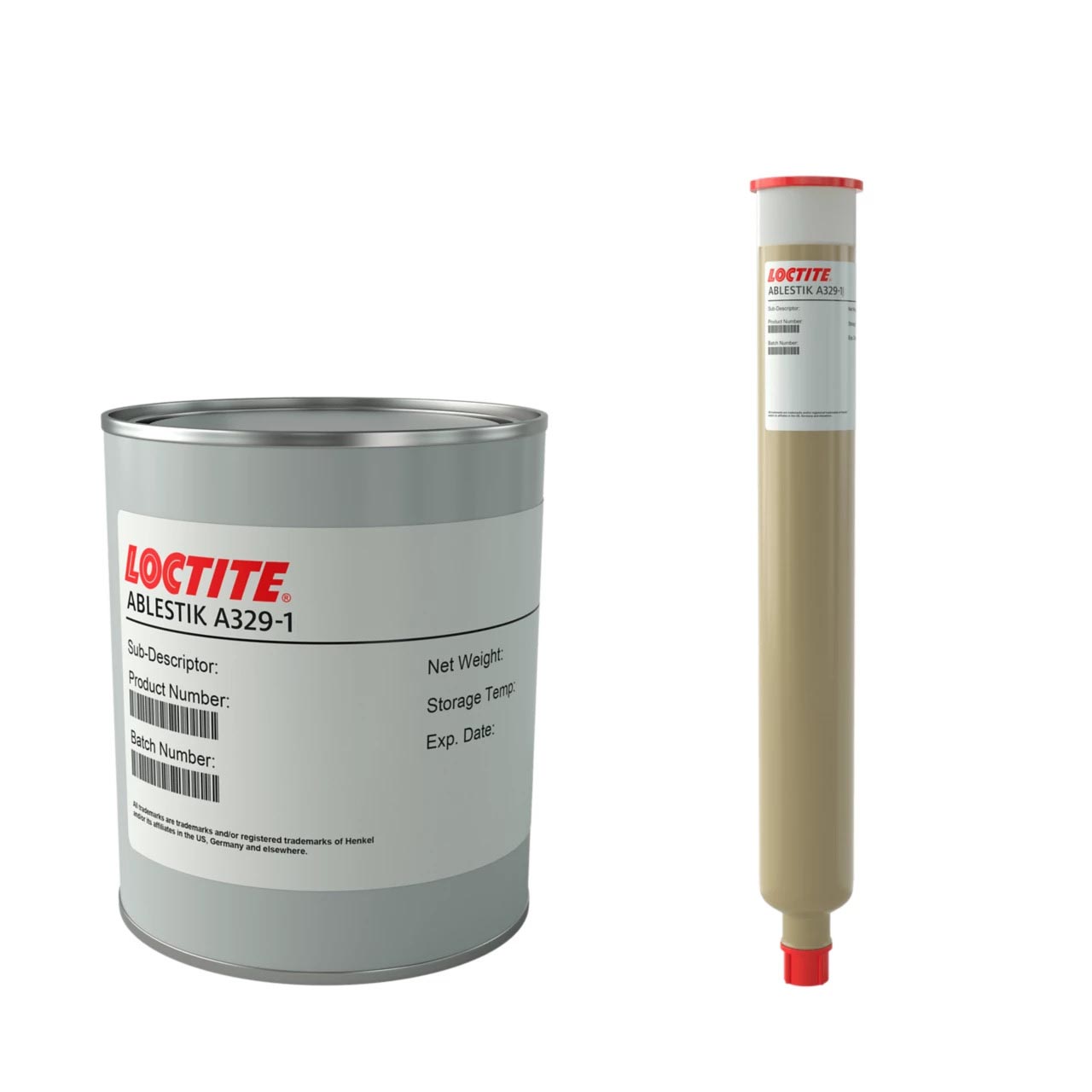LOCTITE ABLESTIK A329-1
Harmonization Code : 3907.30.00.90 | Polyacetals, other polyethers and epoxide resins, in primary forms; polycarbonates, alkyd resins, polyallyl esters and other polyesters, in primary forms : Epoxide resins : Other
Main features
- Class F (155°C)
- Insulating applications
- Resistance to water, freon, solvents etc
Product Description
LOCTITE ABLESTIK A329-1 epoxy encapsulant is designed for insulating applications. It is made thixotropic to prevent sag during heat cure. LOCTITE ABLESTIK A329-1 bonds offer resistance to water, freon, solvents, acids and strong bases.
LOCTITE ABLESTIK A329-1 is a non conductive thixotropic epoxy with oxide filler that is typically used for bonding/insulating metals and for bonding FRP and molded phenolic parts. It is a high temperature performance class F (155°C) sag resistant material with good thermal stability.
Cure Schedule
- 1 minute @180°C
- 3 minutes @160°C
- 20 minutes @120°C
- 90 minutes @100°C
Technical Specifications
| Thermal Properties | |||||
| Glass Transition Temperature (Tg) Glass Transition Temperature (Tg) The glass transition temperature for organic adhesives is a temperature region where the polymers change from glassy and brittle to soft and rubbery. Increasing the temperature further continues the softening process as the viscosity drops too. Temperatures between the glass transition temperature and below the decomposition point of the adhesive are the best region for bonding. The glass-transition temperature Tg of a material characterizes the range of temperatures over which this glass transition occurs. | 130 °C | ||||
| Thermal Conductivity Thermal Conductivity Thermal conductivity describes the ability of a material to conduct heat. It is required by power packages in order to dissipate heat and maintain stable electrical performance. Thermal conductivity units are [W/(m K)] in the SI system and [Btu/(hr ft °F)] in the Imperial system. | 0.4 W/m.K | ||||
| |||||
| Electrical Properties | |||||
| Volume Resistivity Volume Resistivity Volume resistivity, also called volume resistance, bulk resistance or bulk resistivity is a thickness dependent measurement of the resistivity of a material perpendicular to the plane of the surface. | 1.0x1014 Ohms⋅cm | ||||
| Mechanical Properties | |||||
| |||||
| Physical Properties | |||||
| Viscosity Viscosity Viscosity is a measurement of a fluid’s resistance to flow. Viscosity is commonly measured in centiPoise (cP). One cP is defined as the viscosity of water and all other viscosities are derived from this base. MPa is another common unit with a 1:1 conversion to cP. A product like honey would have a much higher viscosity -around 10,000 cPs- compared to water. As a result, honey would flow much slower out of a tipped glass than water would. The viscosity of a material can be decreased with an increase in temperature in order to better suit an application | 27,500 mPa.s | ||||




